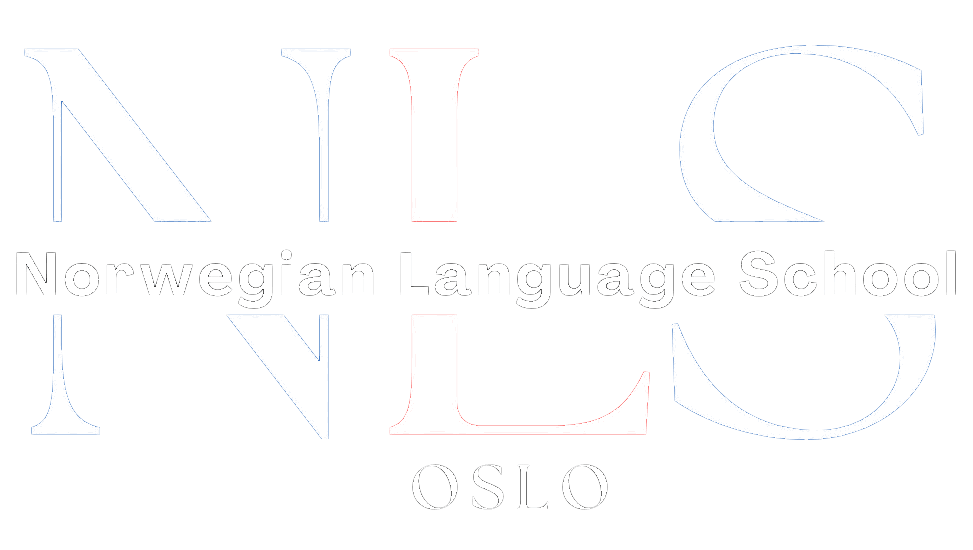

Immerse Yourself in the Italian Language Treasure – Insights, Methods, and Inspiration from Oslo
Introduction
Italian often conjures up images of melodic speech, romantic piazzas, stylish fashion, mouthwatering gelato, and grand operatic performances. But beyond these vivid stereotypes, Italian is a gateway to a dynamic cultural heritage, a linguistic tradition that has shaped art, literature, and music throughout centuries. If you’ve ever dreamed of singing along to an Italian aria with full comprehension, whipping up authentic pasta al pomodoro while understanding the language behind the recipe, or discussing the finer points of a Michelangelo painting in its original context, this article is your guide.
We will discuss why Italian stands out among global languages, explain how Oslo—surprisingly enough—can be your ideal springboard for mastering it, and show what role NLS Norwegian Language School can play in ensuring your success. From tackling grammar to incorporating cultural experiences, you will learn actionable steps that turn language-learning ambition into reality. Let’s explore how to dive into Italian with enthusiasm, whether you’re starting from zero or building on prior knowledge.
Table of Contents
Toggle1. What Makes Italian So Appealing?
1.1 Romance and Musicality
Italian belongs to the Romance language family, yet its romantic allure is more than just nomenclature. The language’s structure, characterized by open vowels and smooth phonetics, creates a rhythmic flow that many describe as musical. For numerous learners, this aesthetic quality sparks a passion to learn Italian—simply speaking it feels like singing.
1.2 Culinary and Cultural Roots
It’s challenging to think of Italy without imagining sumptuous plates of pasta, artisan pizza, or exquisite wine. Each region in Italy boasts distinctive culinary traditions, and learning the language grants you direct insight into these gastronomic nuances. From deciphering historical recipes to watching cooking shows in Italian, your overall appreciation of Italian cuisine—already iconic worldwide—reaches new heights.
1.3 Historical and Artistic Relevance
Italy stands as an epicenter of Western civilization’s development in areas like painting, sculpture, literature, and music. Dante Alighieri shaped modern Italian, Boccaccio pioneered narrative forms, and Renaissance giants like Caravaggio and Raphael revolutionized art. Mastering Italian allows you to read original texts, appreciate unmediated historical documents, and dive into academic or leisure pursuits with newfound depth.
2. The Foundations of Language Learning
2.1 Grammar
A solid understanding of grammar is crucial if you aim to communicate effectively in Italian. With multiple verb tenses, gendered nouns, and varying articles, Italian grammar may initially feel intimidating. However, plenty of patterns are relatively consistent, and once you spot these regularities, the rest becomes more approachable.
2.2 Vocabulary
Building your vocabulary is essential, though it’s easy to feel overwhelmed if you try to memorize too many words at once. Focus on high-frequency words first—terms you’ll encounter in daily conversation or reading—and then broaden your scope. Placing words in sentences or real-life contexts enhances memorization and helps you see how Italian phrases come together naturally.
2.3 Listening and Pronunciation
The best way to capture Italian’s musicality is to listen to native speakers—through podcasts, interviews, films, and music. Pay attention not just to the words but also to intonation and stress. The vowels in Italian are articulated more distinctly than in English, making them essential to practice. By enrolling in a course at a reputable school in Oslo or online, you can receive immediate feedback on pronunciation, preventing bad habits from solidifying.
2.4 Reading and Writing
Reading bolsters your command of grammar and vocabulary, while writing helps you refine sentence structure and identify knowledge gaps. Starting with brief texts, such as simple news articles or short stories, is often less daunting. As your skills grow, transition to more advanced material like novels and academic essays.
3. Why Oslo is a Great Place to Learn Italian
3.1 A Diverse and International City
Oslo has blossomed into a city that embraces global influences. This cultural mosaic fosters a readiness for language learning, including Italian. You’ll find language exchanges, international cafes, and events that bring together people from different backgrounds. Even though Norwegian is the dominant language, the city’s open-mindedness means you can discover pockets of Italian culture in surprising places.
3.2 Quality-Driven Language Schools
NLS Norwegian Language School is a prime example of an institution dedicated to language excellence. Initially focusing on teaching Norwegian, it has expanded to offer Italian instruction that leverages the same pedagogical rigor and insight into learners’ needs. Here, you can benefit from experienced teachers, systematic lesson plans, and a supportive student community.
3.3 Cultural Opportunities Around the City
If you’re eager to engage with Italian beyond the classroom, Oslo provides more possibilities than you might think. Some restaurants specialize in authentic Italian flavors, complete with staff who love talking about their homeland. You might find wine tastings spotlighting Italian vineyards, or film festivals featuring contemporary Italian cinema. These events can significantly enhance your language immersion without leaving Norway.
4. NLS Norwegian Language School – What to Expect?
4.1 Professional and Enthusiastic Teachers
At NLS Norwegian Language School, classes are led by educators who combine academic knowledge of Italian with real-world teaching experience. They understand the specific hurdles Norwegian speakers (and other nationalities) encounter when learning Italian, ensuring a targeted, effective approach.
4.2 Course Flexibility
Each learner has different constraints. Some can visit a physical classroom on weeknights, while others need online classes due to their schedule or geographical location. NLS Norwegian Language School caters to these varied needs, presenting in-person and online learning paths that don’t compromise on quality.
4.3 Structured Progress
From the basics (A1 level) through to advanced conversation and comprehension (B2, C1, etc.), the school organizes courses that help you ascend the linguistic ladder at a comfortable pace. You’ll typically take a placement test or discuss your background with instructors to find the most suitable level. This thoughtful design prevents time wasted on rehashing what you already know or skipping crucial fundamentals.
4.4 Social Engagement and Networking
One of the often-overlooked aspects of language study is community. By enrolling in a course, you join a group of peers who share a curiosity about Italian culture, whether for work, personal enrichment, or travel. The school’s social events—whether in-person coffee meetups or online Q&A sessions—let you practice, form friendships, and stay motivated.
5. Enroll Today to Get a Taste of Italy
If you’re feeling inspired, make the leap by visiting
https://nlsnorwegian.no/learn-italian/
You’ll find complete course details, including upcoming schedules, pricing, and the process for registration. Whether you attend in person in Oslo or join an online cohort, you’ll be taking that crucial first step toward linguistic and cultural fluency.
6. Practical Strategies to Maximize Your Learning
6.1 Build a “Language Bubble”
Surround yourself with Italian whenever possible. Change your phone’s operating language to Italian, stream Italian radio or podcasts during your commute, and watch Italian series on streaming platforms. This immersive environment keeps your brain continuously attuned to Italian structures, even when you’re not actively studying.
6.2 Find a Study Buddy
Studying with someone else—whether a classmate or a friend—creates mutual accountability and encourages more active conversation practice. Together, you can do grammar drills, try role-play scenarios, or simply chat about everyday life in Italian. A supportive learning partner often keeps you motivated and makes the learning process more enjoyable.
6.3 Leverage Technology and Human Interaction
While apps and online resources (like Duolingo, Memrise, or Babbel) are excellent for extra practice, real-time interaction remains key to language development. Participate in conversation groups or language exchange events to receive immediate feedback on your pronunciation, intonation, and vocabulary usage.
6.4 Track Goals and Evaluate Progress
Regularly review where you are and where you want to be. You might aim to hold a basic conversation after three months, read a short story without translation after six, or watch an Italian film without subtitles after a year. These targets inject purpose into your study routine and offer milestones to celebrate as you advance.
7. Embracing Italian Culture – Even in Oslo
7.1 Explore Italian Communities
There are small, thriving Italian communities in many larger European cities, Oslo included. Italians living here may hold informal get-togethers, language meetups, or dinners. Being part of such gatherings not only provides excellent speaking practice but also immerses you in the daily realities of Italians living abroad.
7.2 Culinary Bridges
An effective, and delicious, learning approach is combining language study with culinary exploration. Sign up for an Italian cooking class, watch cooking tutorials in Italian, or find authentic recipes that include ingredient lists and instructions in the language. Understanding how Italians discuss food culture can deepen your appreciation for both the cuisine and the language.
7.3 Art, Architecture, and Design
Oslo’s museums and galleries occasionally host exhibitions with Italian curators or thematic elements. Keep an eye on the websites of major cultural institutions like the National Museum, or smaller galleries that feature visiting artists. Even if the exhibit is not entirely devoted to Italy, you may find events that include presentations in Italian or references to Italian influences.
8. Typical Hurdles – and How to Overcome Them
8.1 Self-Consciousness about Speaking
It’s normal to fear looking foolish in front of peers or native speakers. The antidote? Adopt a playful mindset and remember that mistakes signal growth. Surround yourself with patient, encouraging people—classmates, friends, or teachers—who understand that errors are stepping stones to improvement.
8.2 The Temptation to Give Up Early
Language mastery takes time. After an initial burst of enthusiasm, the realization of just how involved learning can be can deter some. Combat discouragement by setting incremental challenges. Even short daily or weekly efforts—like mastering 10 new words or completing a short paragraph—collectively produce major improvements over months.
8.3 Questioning Relevance
Some might wonder, “Why am I learning Italian in Oslo, of all places?” The truth is, language skills are never wasted. They enrich your life, forge new friendships, expand your worldview, and can even create unexpected professional avenues. In a globalized world, cultural fluency sets you apart.
9. Inspiration from Past Students
Many former students of NLS Norwegian Language School share success stories of modest beginnings blossoming into advanced fluency. Some discovered new career paths working with Italian businesses; others used their skills to connect more deeply with relatives in Italy. There are even those who stumbled upon love, forging international relationships thanks to language learning. These real-life examples demonstrate that learning Italian can have a transformative impact that extends far beyond the classroom.
10. Conclusion – Your Path to Italian Mastery Begins in Oslo
Oslo provides a fertile ground for learning Italian: an active cultural setting, professional language schools like NLS Norwegian Language School, and countless ways to mingle with the local and international community. If you’ve ever felt the lure of Italy’s art, history, or culinary wonders, there is no need to wait. By enrolling in a structured course and embracing the city’s resources, you’ll build a genuine connection with a language that’s deeply intertwined with Europe’s past and present.
Take the first step by signing up for a course at:
https://nlsnorwegian.no/learn-italian/
And say yes to an adventure that will reshape how you see the world—through the lens of Italian.
In bocca al lupo—good luck and may your journey flourish!






